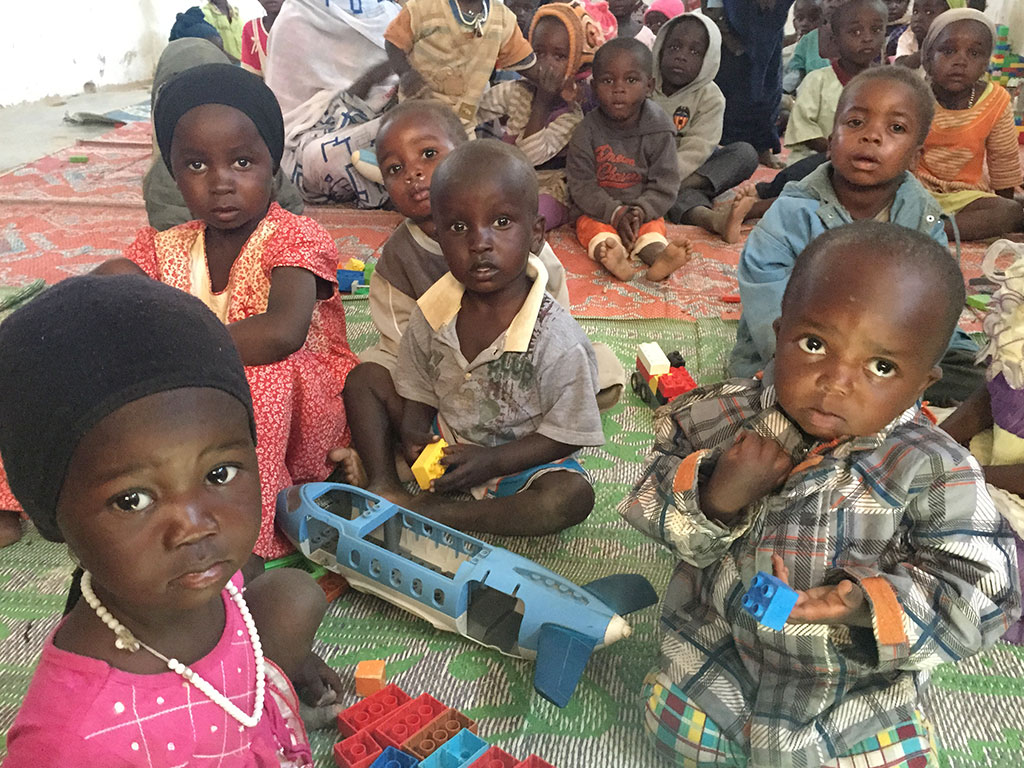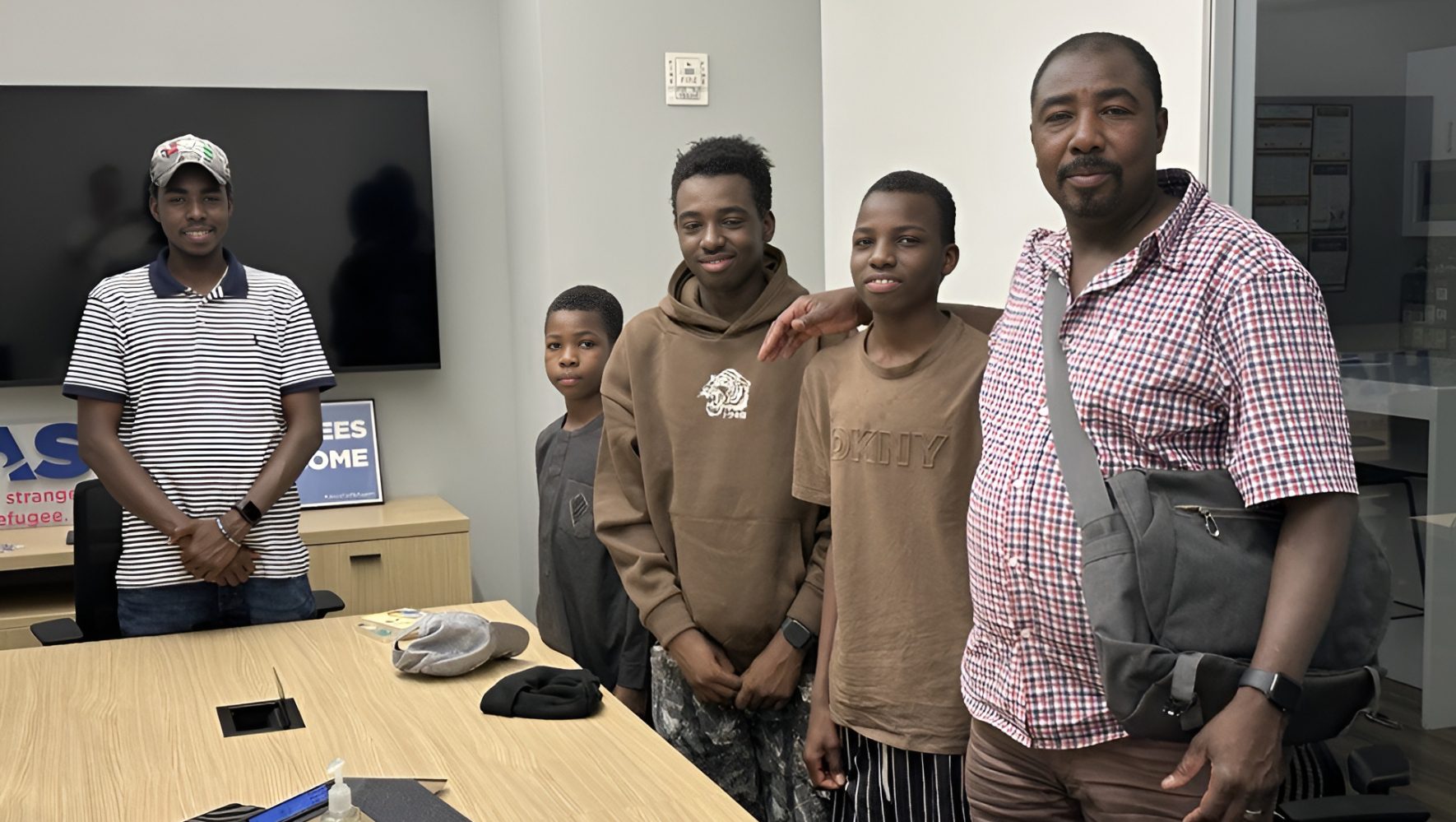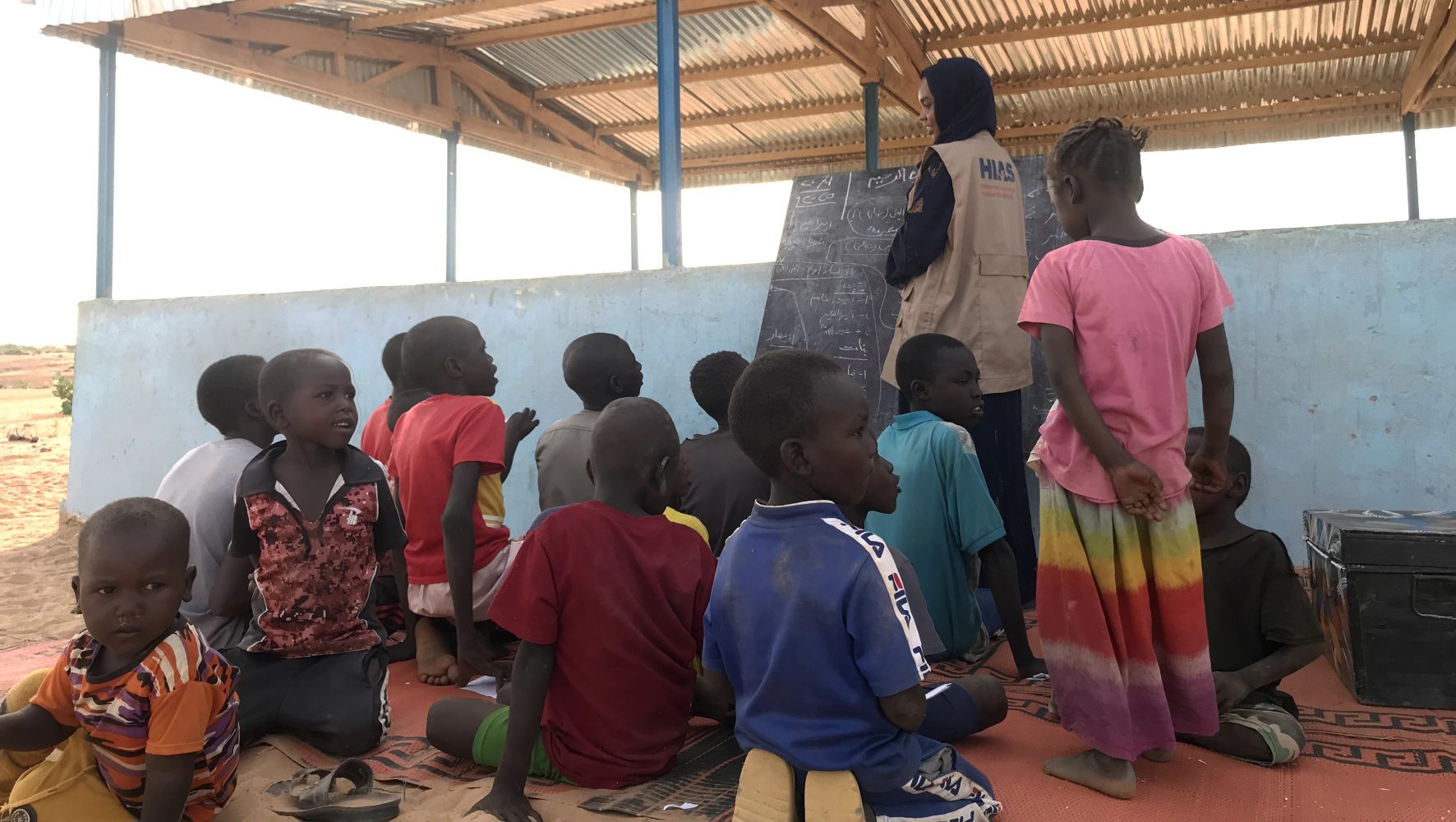The Forgotten Refugees of Darfur
By Rachel Levitan, Associate VP, Global Programs, Strategy & Planning
Jun 01, 2015

Children in the Am Nabak refugee camp, Chad. January 2015.
(Rachel Levitan/HIAS)
“The youth in this camp suffer from many problems, some have solutions and some do not.”
So begins the list of requests I am handed by the leader of the youth committee at Am Nabak refugee camp in eastern Chad. The young man who presented me with this list learned English back in Sudan, and was one of more than 300,000 Sudanese refugees who have lived in the refugee camps of Eastern Chad for close to 10 years. His list for the camp’s young people includes footballs, musical instruments, even televisions to watch sports, but also a request to learn English, French and computer skills and, poignantly, help for disabled youth.
What could I say to this young man who wanted so much more than refugee camp life could provide for himself and his friends? Sitting with him in an old building, with shelves sparsely lined with tomes stamped “Books for Africa” along their spines, I could only say what I knew: none of the international aid agencies, like the UN refugee agency or HIAS, have the resources for Sudanese refugees that they had some 10 years ago, at the height of the Darfur crisis. And, with crises in Syria, Iraq, and Ukraine producing refugees at record levels, donors’ attention and money is being directed elsewhere.
So I told him what I could: that we needed to work together to come up with solutions that gave him and his friends a chance at a real future; that we needed to think outside the box—outside the camp—to really do that; that we need to develop ways for his community to integrate locally if they couldn’t go back home to Sudan.
HIAS’ work in Chad is not easy. The camps we serve are in remote locations, requiring some staff to travel an hour in each direction, over dusty, rutted roads, accompanied by security escorts, to reach the refugees. Each day our staff meet and train community organizers who monitor gender-based violence; identify and help vulnerable refugees, including older people, people with disabilities, and unaccompanied children; empower women’s centers; and encourage dialogue between Sudanese refugees and local Chadian communities. All this against a backdrop of reduced food rations and resources.
Our next challenge is to work with Sudanese refugees to build pathways to self-sufficiency outside of the camps in Chad. This means developing models for meaningful economic opportunity that not only benefit Sudanese but also help Chadians. It is a huge challenge, but ten years after the Darfur crisis, with conflict in South Sudan continuing, and with donor funds going to larger and more pressing refugee crises, it is our only real option.


